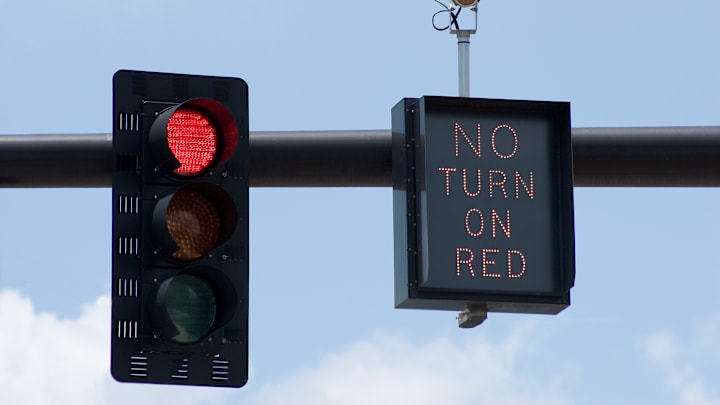In the 1970s, most states adopted the practice of allowing vehicles to turn right on red. But what’s become standard driving protocol for nearly a half-century could soon go the way of the Model T.
According to the Associated Press, growing concern over the safety of the maneuver—which permits drivers to make a right turn at a red light unless signage prohibits it—is prompting reconsideration in several states and communities. Washington, D.C., for example, has adopted a ban beginning in 2025; in Ann Arbor, Michigan, right on red is no longer permitted downtown; other cities are considering similar action.
The review comes as safety data points to an increase in vehicular accidents affecting pedestrians and bicyclists, with some automotive safety analysts pointing to right on red as a potential cause. Drivers turning into traffic at their own discretion, they argue, may result in collisions. The Department of Transportation notes that right-on-red turns could be calamitous owing to drivers who are too focused on left-side traffic and fail to check for activity in crosswalks.
Others aren’t so sure. A National Motorists Association study due to be released soon found that in California, only one pedestrian death every two years was attributable to a right-on-red accident. Another, this one by the Governors Highway Safety Association, found an overall increase in pedestrian deaths: 12 percent from 2020 to 2021. Though there was an increase in people being struck by cars turning right on red, it was only in the case of SUVs and pick-ups, which can have more blind spots than sedans.
Turning right on red dates as far back as 1939, at least in California. By the 1970s, the majority of states adopted it on the premise that idling at a red light was using too much fuel, which was particularly troublesome during that decade’s energy crisis. A federal law insisted states enact the practice or risk losing federal energy conservation funding. Even then, however, critics worried that pedestrians might be vulnerable to distracted drivers.
